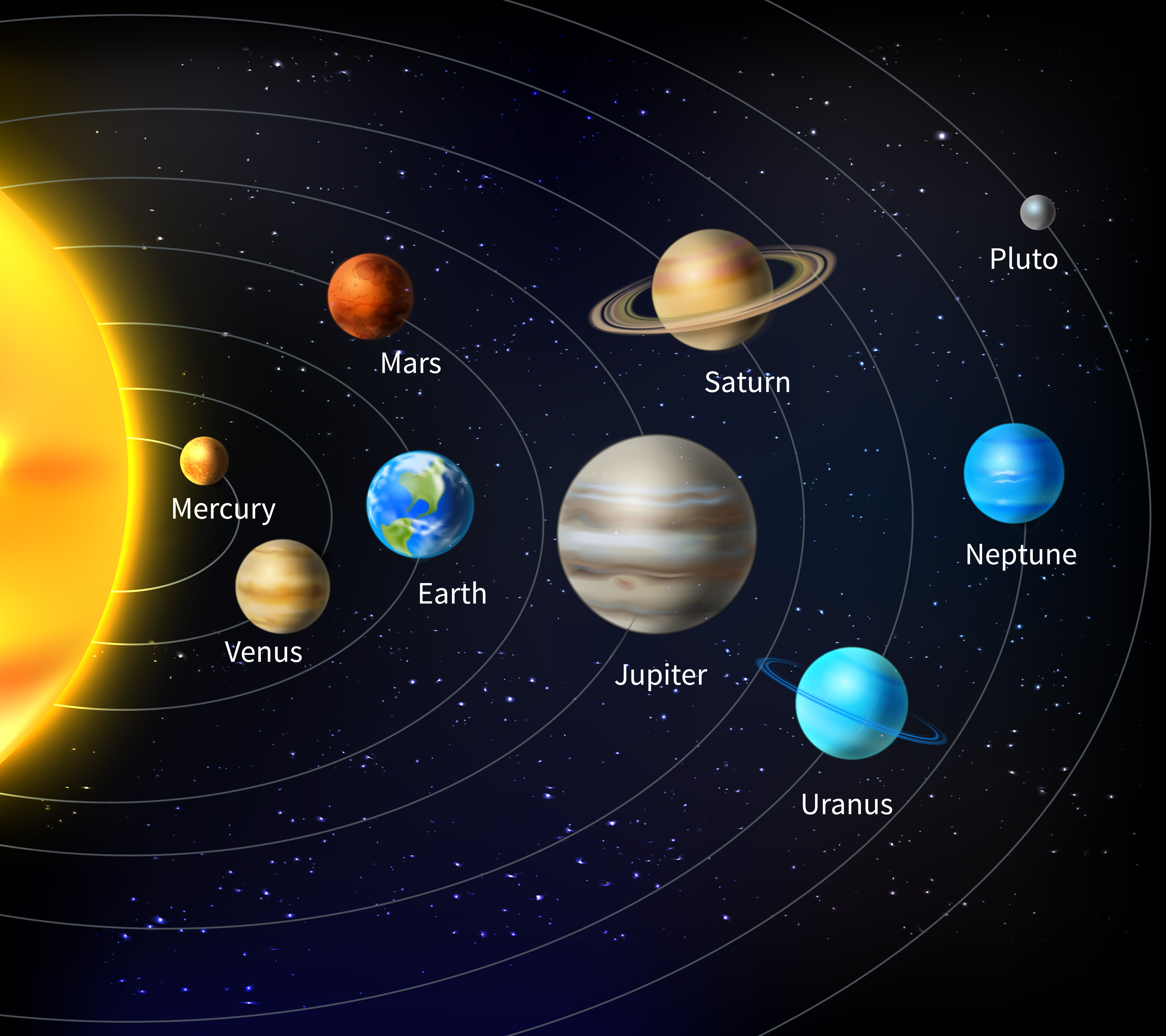The Sun based System[b] is the gravitationally bound arrangement of the Sun and the articles that circle it, either straightforwardly or indirectly.[c] Of the items that circle the Sun straightforwardly, the biggest are the eight planets,[d] with the rest of more modest articles, the bantam planets and little Nearby planetary group bodies. Of the articles that circle the Sun in a roundabout way—the normal satellites—two are bigger than the littlest planet, Mercury.[e]
The Close planetary system shaped 4.6 billion years prior from the gravitational breakdown of a goliath interstellar atomic cloud. By far most of the framework's mass is in the Sun, with most of the excess mass contained in Jupiter. The four more modest inward planets, Mercury, Venus, Earth and Mars, are earthbound planets, being principally made out of rock and metal. The four external planets are monster planets, being significantly more enormous than the terrestrials. The two biggest planets, Jupiter and Saturn, are gas goliaths, being made principally out of hydrogen and helium; the two furthest planets, Uranus and Neptune, are ice monsters, being made for the most part out of substances with moderately high dissolving focuses contrasted and hydrogen and helium, called volatiles, like water, alkali and methane. Every one of the eight planets have practically roundabout circles that exist in an almost level plate called the ecliptic.
The Nearby planetary group additionally contains more modest objects.[f] The space rock belt, which lies between the circles of Mars and Jupiter, generally contains objects made, similar to the earthbound planets, of rock and metal. Past Neptune's circle lie the Kuiper belt and dissipated plate, which are populaces of trans-Neptunian objects made generally out of frosts, and past them a newfound populace of sednoids. Inside these populaces, a few items are sufficiently huge to have adjusted under their own gravity, however there is extensive discussion with regards to the number of there will demonstrate to be.[9][10] Such articles are ordered as bantam planets. The solitary certain bantam planet is Pluto, with another trans-Neptunian object, Eris, expected to be, and the space rock Ceres at any rate near being a diminutive person planet.[f] notwithstanding these two locales, different other little body populaces, including comets, centaurs and interplanetary residue mists, unreservedly travel between areas. Six of the planets, the six biggest conceivable bantam planets, and a considerable lot of the more modest bodies are circled by normal satellites, generally named "moons" after the Moon. Every one of the external planets is encompassed via planetary rings of residue and other little articles.
The sun oriented breeze, a surge of charged particles streaming outwards from the Sun, makes an air pocket like locale in the interstellar medium known as the heliosphere. The heliopause is where pressure from the sun based breeze is equivalent to the contradicting pressing factor of the interstellar medium; it stretches out to the edge of the dispersed plate. The Oort cloud, which is believed to be the hotspot for extensive stretch comets, may likewise exist a ways off around multiple times farther than the heliosphere. The Nearby planetary group is situated in the Orion Arm, 26,000 light-years from the focal point of the Smooth Way universe.



0 Comments